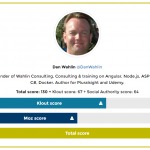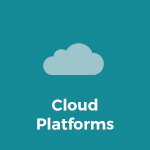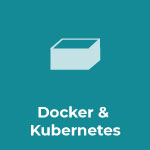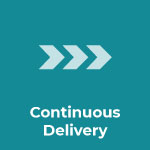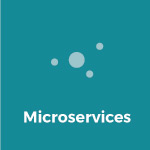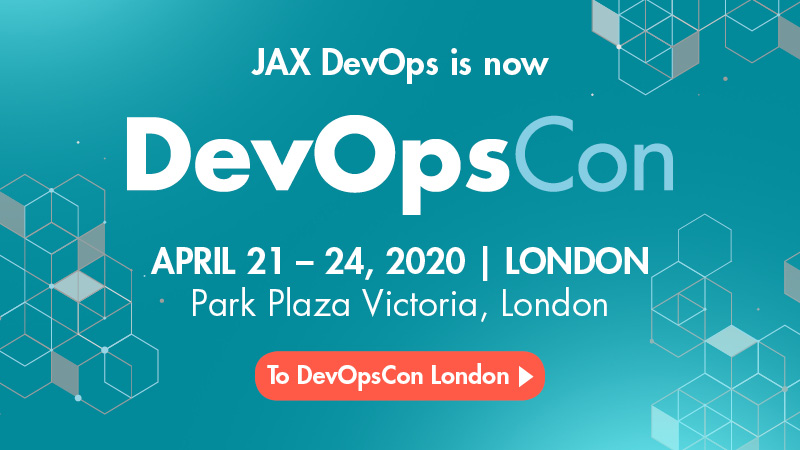
Organizations going to the cloud. Source: Shutterstock
JAXenter: What are your DevOps predictions for 2018? What should we pay attention to?
Tommy Tynjä: DevOps has become more focused on technical solutions and automation tools but that will only solve a small part of the problem. The issues that most organizations currently face are around culture and improving collaboration to get things done in a sustainable way. The organizations who embrace the culture change aspect will gain an advantage over their competition. A focus on only technical parts of DevOps poses many dangers, and we may see many failed DevOps adoption initiatives where companies invest without getting any substantial return.
JAXenter: What makes a good DevOps practitioner?
Tommy Tynjä: Understanding that developers, operations personnel and basically anyone involved in the software development process need to work together. All these different roles are working towards the same goal within the same company, sharing the same mission: to deliver high quality software to users.
JAXenter: Will DevOps stay as it is now or is there a chance that we’ll be calling it DevSecOps from now on?
Tommy Tynjä: Delivering software is so much more than just development and operations. There is not only the security issue, but also quality assurance, monitoring, fault-tolerance etc., so I see no point in bolting on security to the DevOps term. It rather emphasizes a common problem in the industry, which is that security is often bolted on afterwards. It is something that should be in everyone’s interest and thus has to go into the initial development along with all other concerns about how the software should perform.
Delivering software is so much more than just development and operations.
JAXenter: Do you think more organizations will move to cloud in 2018?
Tommy Tynjä: Leveraging cloud technologies is the next natural step for an organization adopting Continuous Delivery and DevOps ways of working. It speeds up infrastructure provisioning and setup while providing development teams with self-service infrastructure. This also allows the development teams to take ownership of the infrastructure where their applications run. I’ve seen companies get a big boost in terms of software delivery pace after adopting cloud technologies.
JAXenter: Is Java ideal for microservices developments? Should companies continue to invest resources in this direction?
Tommy Tynjä: Java and the JVM is a mature platform with a rich ecosystem. I believe you should select the right tool for the job. The JVM provides a stable platform but it does not require you to run Java. I’ve written microservices in Groovy and Scala as well where it made more sense than opting for Java, but we could still leverage from our knowledge running software on the JVM. The beauty about a microservice style architecture is that it makes it easy for you to experiment with other languages or frameworks without making a heavy investment. Key is to have services that are small enough so that they can easily be replaced if necessary.
JAXenter: Containers (and orchestration tools) are all the rage right now. Will general interest in containers grow this year? If yes, how are we going to handle the older applications?
Tommy Tynjä: When I started working with containers many years ago there were none of these orchestration tools available that we have today so we wrote our own in Bash. Today, the threshold to get started is much lower and people are getting more aware of the benefits that containers bring which makes it a natural choice. Today, container technology is easy to adopt and benefit from. I’m not convinced there is value in migrating very old applications to running in containers or on a container platform, mostly because they haven’t been developed with those considerations in mind. The value in such an effort would need to be calculated in order to motivate it.

JAXenter: What challenges should Kubernetes address in 2018?
Tommy Tynjä: Service-mesh frameworks such as Istio are very interesting and addresses cross-cutting concerns you are likely to encounter when running on Kubernetes. Such frameworks will become natural parts of service platforms going forward.
JAXenter: Will serverless be seen as a competitor to container-based cloud infrastructure or will they somehow go hand in hand?
Tommy Tynjä: There will be use cases for both technologies. The important thing for an organization leveraging these technologies is to have proper Continuous Delivery pipelines set up to allow the business to focus on what matters, which is the software that adds value to their customers. How the software is run is secondary as long as all the necessary feedback loops such as delivery pipelines, monitoring and fault-tolerance etc. are in place.
JAXenter: Could you offer us some tips & tricks that you discovered this year and decided to stick to?
Tommy Tynjä: When making decisions on which tools or products to use there has to be proper support for automation using APIs, CLIs, infrastructure as code or such. Surprisingly many tools do not offer this today and many have such support built-in later in non-ideal ways. Otherwise you will find yourself spending too much time either figuring out how to automate even the simplest thing or ever worse, configure something manually without being able to easily version control and reproduce it. Automation has to, and should, be easy and the encouraged way of configuring a tool or product.
Thank you very much!




